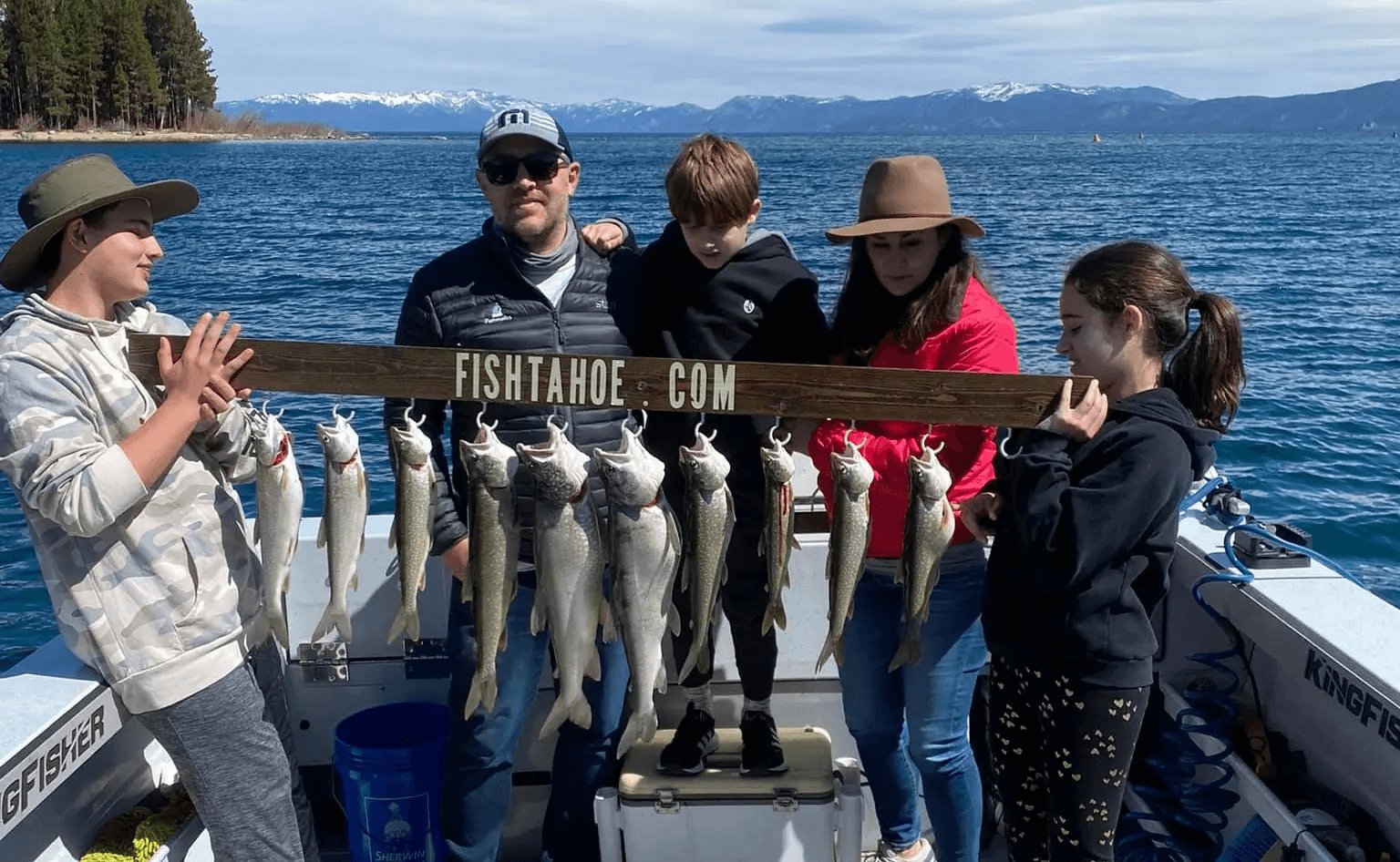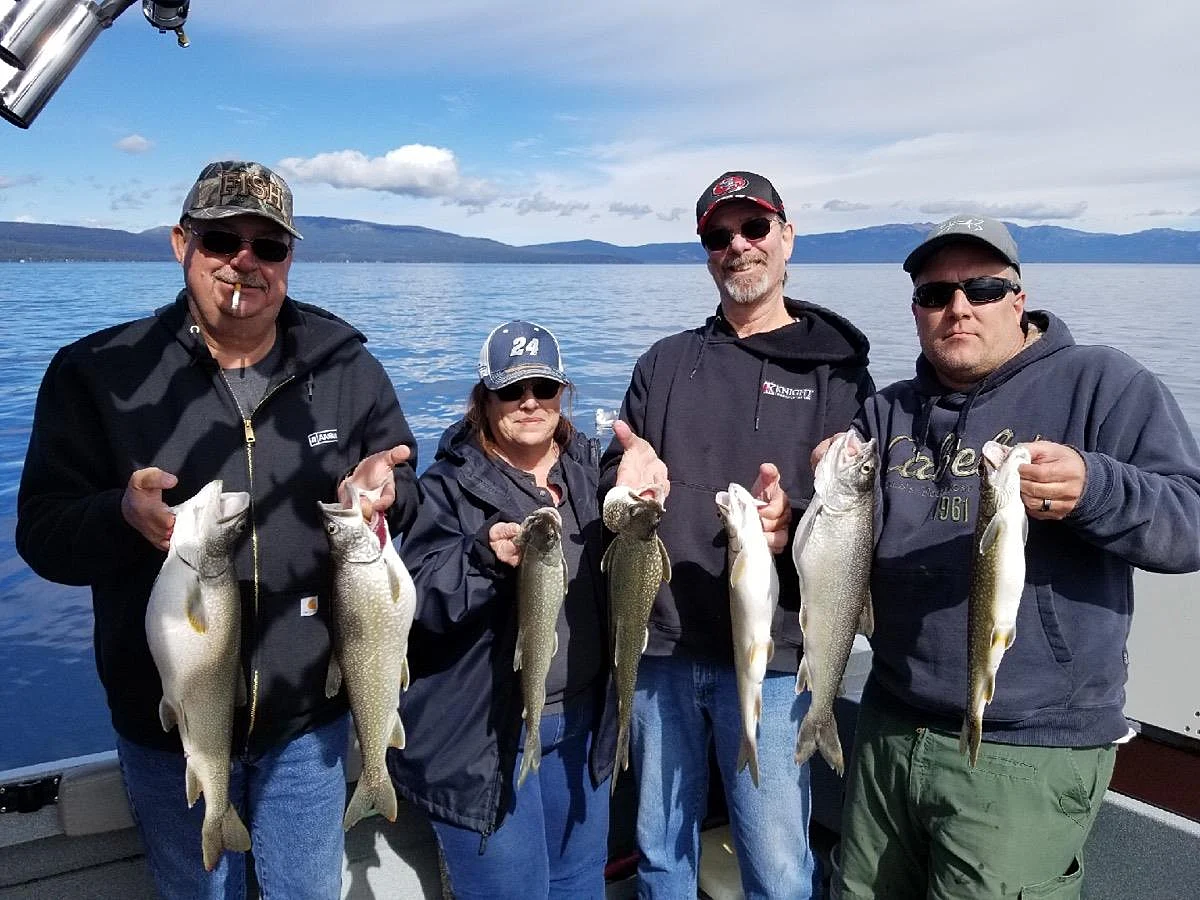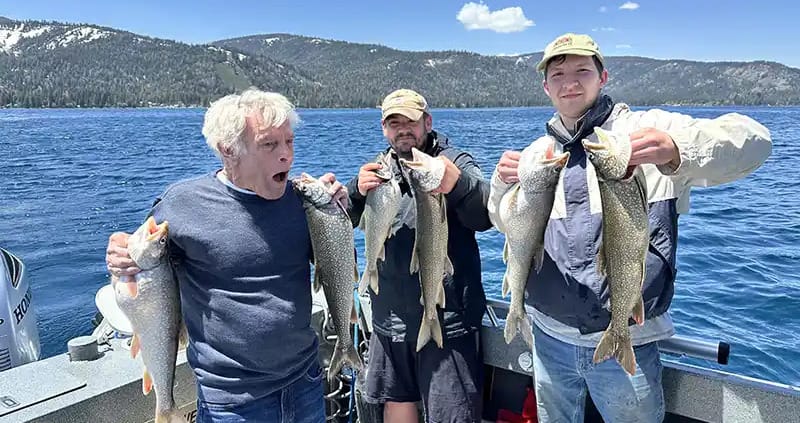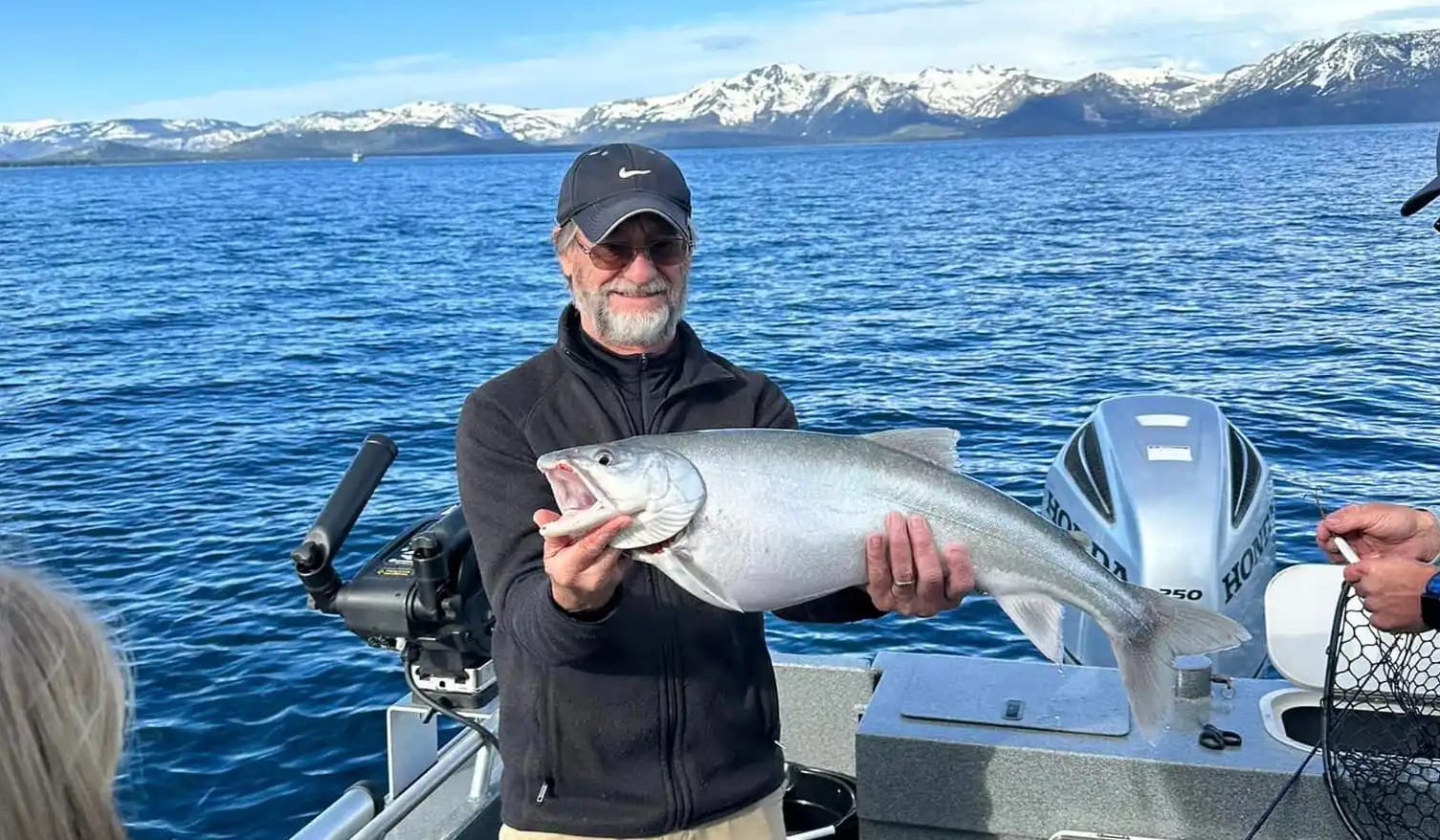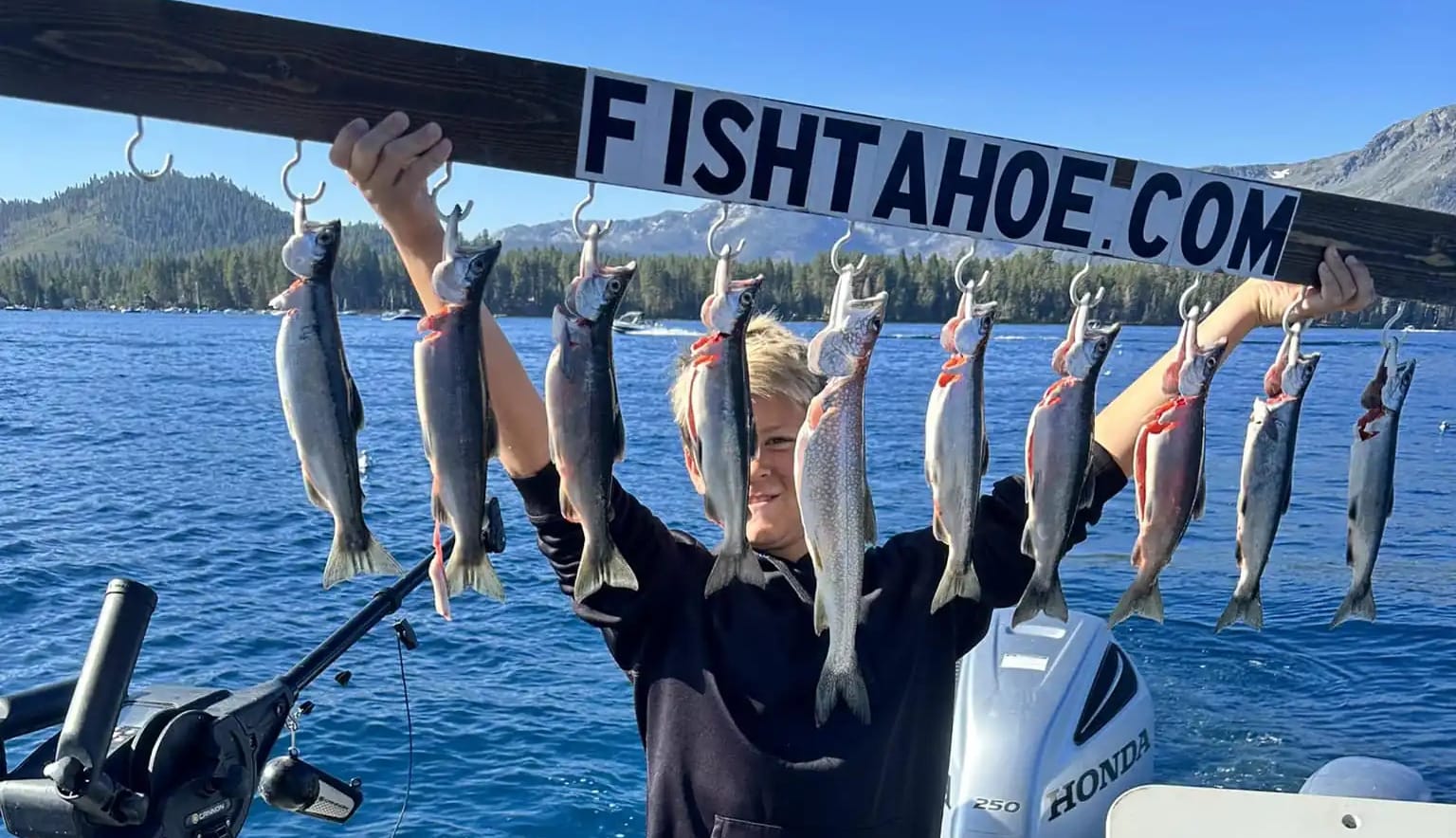Summer Fishing in Lake Tahoe

Even for experienced anglers, a first-time trip to fish Lake Tahoe can feel overwhelming. It’s a massive body of water that straddles California and Nevada, and figuring out where to start is no easy task. That’s why listening to—or fishing with—someone local like Tahoe guide Joby Cefalu is a smart move.
“You could spend a lot of hours and fish a lot of miles on Lake Tahoe with little or no luck,” says Cefalu, who runs Mile High Fishing Charters. “It’s not a simple fishery. You really have to know the shorelines and where the fish are the rest of the year.”
Still, he expects this summer to be a productive one, especially for Mackinaw and kokanee. And if anyone knows how to find them, it’s Cefalu—he’s been fishing this lake since childhood and has spent decades learning its patterns.
Growing up around Lake Tahoe gave Cefalu an early connection to fishing. “My entire childhood was spent on a skiff in Tahoe,” he says. “
And I’d spend my summers commercial fishing with my uncle in Fort Bragg. So that fishing bug was in me from the start.”
When it comes to kokanee fishing, Cefalu heads over to the Camp Richardson shelf and keeps things classic: small flashers or dodgers paired with a Kokanee Bug tipped with corn. If you don’t have downriggers, 10 to 12 colors of lead core line will get the job done. But if your boat does have downriggers, run them between 55 and 110 feet.
“You’ll find really good success,” Cefalu says. “If you’re on a good school, you might get 50 strikes before hitting your five-fish limit.”
Kokanee aren’t the only fish in the zone. “You can always fish for both kokanee and Mackinaw at the same time,” he says. “Mackinaw lay underneath the schools and feed on them.” Cefalu stacks multiple lines on the downrigger—running big bugs deeper for the Macks and keeping smaller rigs up higher for kokanee. A flasher on the deeper rod with about an 18-inch leader is his go-to.
Mackinaw, or lake trout, are a big part of his operation now. When he first started guiding about 25 years ago, he realized these fish were the best bet on Lake Tahoe. “More and more people are targeting lake trout, and there aren’t many secrets left,” he says. “It’s a really healthy fishery.”
The abundance of lake trout has made Tahoe a destination for anglers who want to bring their own boats and explore. Cefalu thinks that’s a good thing. But it’s still a challenging lake to learn.
To help people understand it, he runs seminars and speaks at sport shows. Tahoe is the largest alpine lake in North America and among the deepest. That alone makes it intimidating.
“When I talk to people about fishing Tahoe, I try to break it into smaller fisheries,” he says. “You can’t treat it like one giant lake. It’s a vast body of water surrounded by mountains—and underneath the surface, it’s like a mountain range too, with drop-offs going down to 1,200 to 1,600 feet.”
“If you try to take on the whole lake at once, it’s going to eat you up.”
Despite the lake’s size and the heavy summer traffic from pleasure boats and water skiers, there are still plenty of fish to catch. Cefalu says his clients enjoy being part of the action, and that’s why he leans toward jigging over trolling.
“Not to knock trolling—it’s definitely active fishing too—but I’ve found over the years that people like jigging because they’re engaged the whole time.”
His setup for jigging includes 2.5 to 3-ounce herring jigs tipped with minnows. From mid-May through July, Mackinaw typically hold in 60 to 90 feet of water. He recommends light tackle, around 10- to 12-pound test, for better feel.
Since the Macks are often chasing kokanee schools, summer offers a great opportunity to catch not only numbers but also trophy-sized fish.
“It’s vertical jigging. I try to keep us straight up and down, drifting just enough by shifting in and out of gear,” Cefalu explains. “You’ll move around a lot and work the structure from different angles—inside-out or outside-in.”
As the summer crowds pour into Tahoe—some hitting the casinos, others hiking, camping, or just lounging—Cefalu says fishing should be on everyone’s list.
With an abundance of lake trout and a variety of techniques that work, Tahoe offers something for every angler. But it’s not a place for shortcuts.
“It can be daunting, and a lot of people don’t have the patience,” he says. “That’s where I think hiring a professional guide is the best thing you can do in Tahoe.”
